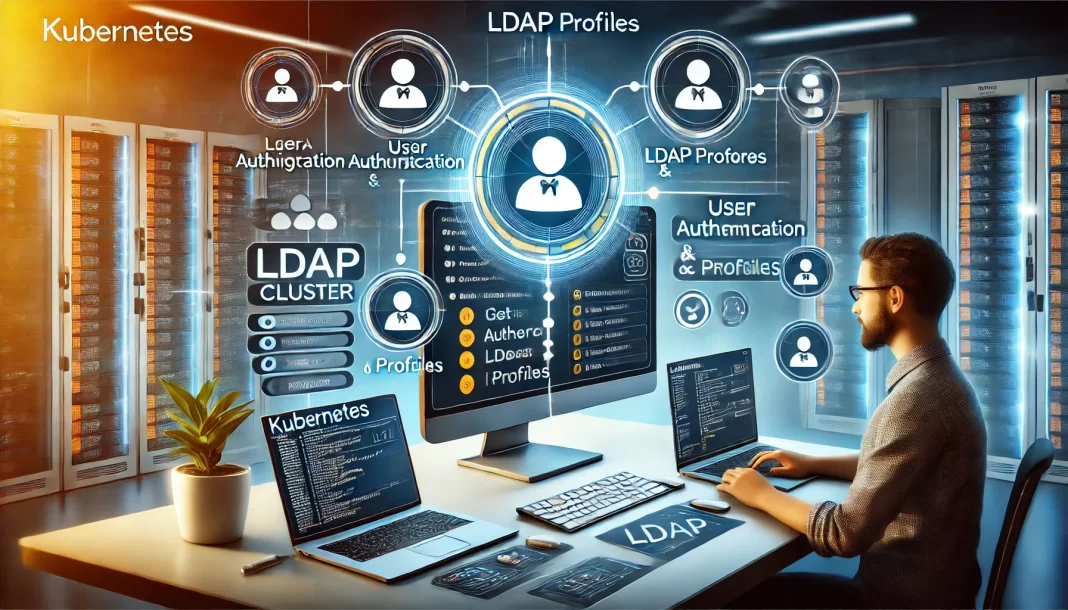Managing user authentication and access in Kubernetes can seem like a mountain to climb, but tools like LDAP (Lightweight Directory Access Protocol) make the process more efficient and secure. If you’re trying to “get LDAP profile” information in Kubernetes and don’t know where to start, this blog has got you covered. We’ll break down the essentials in simple language so that even a Kubernetes newbie can follow along.
What Is LDAP and Why Does It Matter in Kubernetes?
Before diving into the technicalities, let’s cover the basics. LDAP stands for Lightweight Directory Access Protocol. Think of it as a digital phonebook, storing and organizing user profiles for authentication and authorization purposes. It’s commonly used in enterprise environments to manage users across different systems.
In Kubernetes, LDAP can be integrated to manage access to your cluster. By using LDAP profiles, you can:
- Control who can access your Kubernetes cluster.
- Assign specific permissions based on user roles.
- Enhance security by centralizing authentication.
Now, let’s see how to get an LDAP profile in Kubernetes.
Setting Up LDAP Integration in Kubernetes
Step 1: Understand Your Environment
Before jumping into configurations, take stock of your environment. Here’s what you need:
- An existing LDAP server (like OpenLDAP or Active Directory).
- A Kubernetes cluster that you want to integrate with LDAP.
- kubectl, the Kubernetes command-line tool, installed on your system.
Step 2: Install an LDAP Authentication Proxy
Kubernetes doesn’t directly support LDAP authentication out of the box. Instead, you’ll need an authentication proxy like Dex or Keycloak. These tools act as a bridge between Kubernetes and your LDAP server.
For this guide, we’ll use Dex as an example.
Deploy Dex in your Kubernetes cluster:
yaml
Copy code
apiVersion: apps/v1
kind: Deployment
metadata:
name: dex
spec:
replicas: 1
selector:
matchLabels:
app: dex
template:
metadata:
labels:
app: dex
spec:
containers:
– name: dex
image: ghcr.io/dexidp/dex:v2.30.0
ports:
– containerPort: 5556
volumeMounts:
– name: config
mountPath: /etc/dex
args: [“serve”, “/etc/dex/config.yaml”]
volumes:
– name: config
configMap:
name: dex-config
Create a ConfigMap for Dex:
yaml
Copy code
apiVersion: v1
kind: ConfigMap
metadata:
name: dex-config
data:
config.yaml: |
connectors:
– type: ldap
id: ldap
name: LDAP
config:
host: “ldap.example.com:389”
bindDN: “cn=admin,dc=example,dc=com”
bindPW: “password”
userSearch:
baseDN: “ou=users,dc=example,dc=com”
filter: “(objectClass=person)”
username: “uid”
This configuration sets up a basic connection between Dex and your LDAP server.
Fetching LDAP Profiles in Kubernetes
Once your LDAP proxy is set up, you can start fetching profiles. Here’s how:
Step 1: Authenticate Users
Users will now authenticate against your LDAP server when they access the Kubernetes API server. You can verify this by checking logs in Dex or your LDAP server.
Step 2: Retrieve User Information
To fetch a user’s LDAP profile, query the LDAP server directly. For example:
bash
Copy code
ldapsearch -x -LLL -H ldap://ldap.example.com -D “cn=admin,dc=example,dc=com” -w password -b “ou=users,dc=example,dc=com” “(uid=johndoe)”
This command fetches all profile details for the user johndoe.
Step 3: Assign Roles Based on LDAP Profiles
Once you have the LDAP profile, map users to Kubernetes roles using a RoleBinding or ClusterRoleBinding. For example:
yaml
Copy code
apiVersion: rbac.authorization.k8s.io/v1
kind: RoleBinding
metadata:
name: developer-access
namespace: dev
subjects:
– kind: User
name: johndoe
roleRef:
kind: Role
name: developer
apiGroup: rbac.authorization.k8s.io
Troubleshooting Common Issues
- Connection Errors
If Dex can’t connect to your LDAP server, double-check the host, bindDN, and bindPW fields in your Dex ConfigMap. - Missing User Profiles
Ensure your userSearch filter is correctly set up. Test it using an LDAP client before applying it to Dex. - Authentication Failures
Confirm that Kubernetes is correctly configured to use Dex for authentication by reviewing your API server flags.
What Sets This Guide Apart?
Most guides skim over details or assume you’re already an expert. This blog simplifies the process with clear steps, easy explanations, and practical examples. Unlike other posts, we’ve included real-world configurations and troubleshooting tips to ensure your success.
Final Thoughts: Simplifying Kubernetes Authentication with LDAP
Integrating LDAP with Kubernetes might seem daunting at first, but it’s a powerful way to manage access securely and efficiently. By following this guide, you’ve taken the first step toward mastering this integration. With tools like Dex, you can streamline authentication and ensure your cluster is well-protected.
Got questions or need help? Drop a comment below. Happy Kubernetes-ing!



